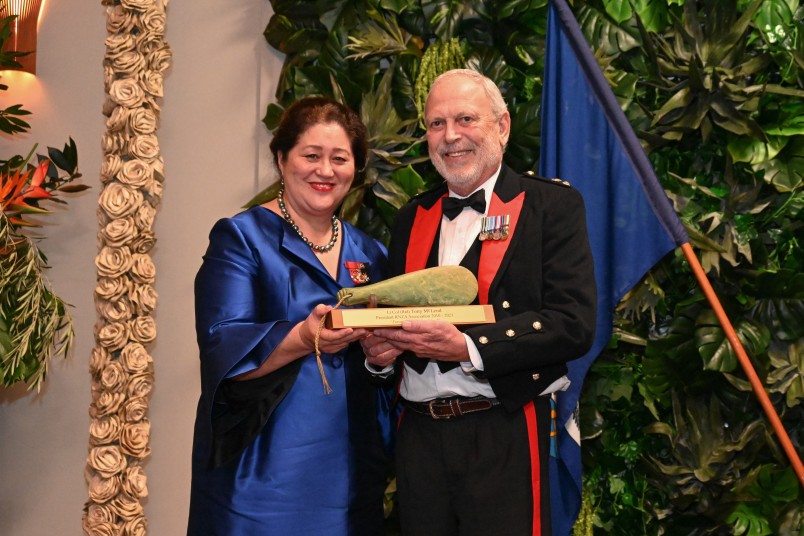Gunners’ Day Dinner
Kia ora koutou. Nga mihi māhana ki a koutou. Nau mai haere mai ra ki te Whare Kawana o Tāmaki Makaurau.
I specifically acknowledge:
Brigadier Paul Southwell, the Colonel Commandant of the Regiment
Colonel Ben Bagley, Regimental Colonel
Major Shay Bassett, the President of the Association
Thank you for delaying your traditional Gunner’s Day Dinner until this evening – and a very warm welcome to you all.
I am delighted to have this opportunity to honour the Vice-regal connection with our Defence Force.
And having just returned from the celebrations in London to mark the Platinum Jubilee of Her Majesty Queen Elizabeth, the Captain-General of the Royal Regiment of New Zealand Artillery, I must say that one of the highlights for me was seeing members of our three Services, led by Māori warriors, marching in the Jubilee pageant.
It was deeply moving to see them as part of the military parade of personnel from around the Commonwealth.
The sense of history and connections between the peoples of the Commonwealth was palpable – and I felt immense pride in both my Māori and British heritage.
As it happens, that heritage includes a rather defining moment in New Zealand’s history – and one where artillery played a decisive role.
You may be interested to know that my tipuna, Te Ruke Kawiti designed the remarkable pā at Ruapekapeka – the site of the final battle of the Northern War in 1846.
Ruapekapeka translates as the “rat’s nest”. It was a complex piece of engineering, with intricate tunnels, bunkers, rifle pits and trenches.
Kawiti had just two cannon, versus the British forces’ three 32-pounder cannon, an 18-pounder, two howitzers, and mortar and rocket tubes.
To reach the site of the pā, the British forces hauled their artillery over nearly 30 kilometres of rough country – an extraordinary feat in itself.
Kawiti’s pā was designed in such a way that it offered a superior level of protection from shelling – but as you will know, timber and earth ramparts are no match against sustained bombardment.
Eventually, the British artillery created three small breaches in the palisade surrounding the pā. However, the defenders were able to vacate the pa before the British forces entered it, and my tipuna –Kawiti and Hone Heke – both survived the battle.
So there’s some history that I bring with me to my role as Commander-in-Chief. And I must say, I have been touched by the warm welcome I have received from the three Services since I took up this role.
Her Majesty has had 16 Governors-General in Aotearoa during reign, and I am sure all of us have treasured our interactions with her.
While there were no opportunities for me to meet the Queen last weekend – I welcomed the opportunity to meet the Prince of Wales and the Duke of Cambridge.
The crowds attending the Jubilee commemorations expressed their huge admiration and affection for Her Majesty. For so many people, all over the world, the Queen epitomises remarkable constancy, fortitude and dedication to service.
Her messages over the years have provided consolation during turbulent times, and we do well to emulate her example.
The last few years have been particularly challenging for our service personnel, as they have been tasked with a central role in our nation’s response to the pandemic.
New Zealanders owe them a great debt of gratitude for their professionalism in the face of such rapidly evolving responsibilities.
And now in Aotearoa, the impact of a far-away conflict has reached our shores. A year ago, who would have imagined that New Zealanders would be in the UK training Ukrainian gun crews?
I cannot begin to imagine the sobering realities of military service and armed conflict, and I thank you most sincerely for the sacrifices all of you have made on behalf of fellow New Zealanders.
Tonight, know you are amongst comrades – old and new – who are best placed to understand those realities for Gunners as well as what it means to serve your country.
Kia ora huihui tatou katoa.

